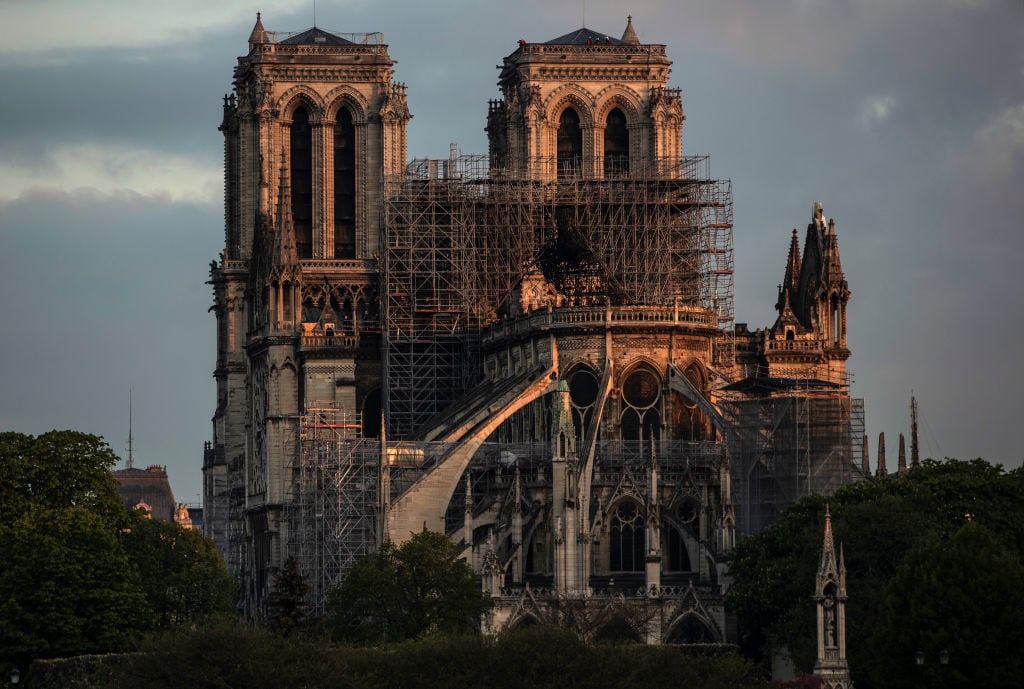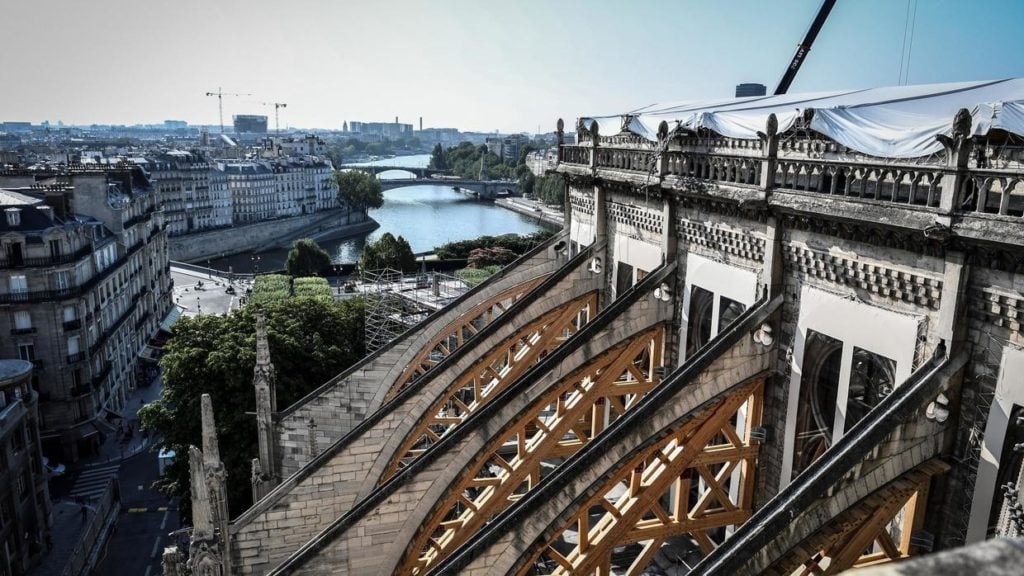Emmanuel Macron’s dream of adding a “contemporary” touch to Notre Dame’s reconstructed roof and spire may be dashed entirely after one of France’s leading architects, Eric Wirth, vice president of the Guild of French Architects, declared that it would be a grave mistake to rebuild the roof in anything but same wood used in its original construction.
Wirth forcefully argued that wood—rather than concrete, material, or other materials that have been suggested—was the most ecological and structurally sound material during at a hearing at the National Assembly this week.
“The most modern material, the most ecological today,” he said, “is wood. It is the only one that traps carbon.” He also noted its natural fire resistance. “[Notre Dame] has been there for 800 years. If the structure had been made of steel, there would be no cathedral to speak of today,” he said. In a fire, “iron holds for half an hour, an hour, and then writhes, pulls on the walls and collapses everything.”
In the immediate aftermath of the April 2019 blaze that incinerated the cathedral’s roof, architects around the world imagined replacing it with everything from stained glass to a public park—ideas that were largely laid to rest by a ruling of the French Senate in May.

Notre-Dame Cathedral at sunrise following the fire. Photo by Dan Kitwood/Getty Images.
General Jean-Louis Georgelin, who is overseeing the Notre-Dame reconstruction, denied claims that oak wood had already been chosen to redo the frame.
“There will be a study, examination of all possible options,” he said in the assembly, and cautioned that he would investigate any “lobbying” by the wood industry. Wirth rebuffed the claim of lobbying, saying “the money is there” and that though fealty to the centuries-old materials may come as something of a surprise, it is practicality that fuels his perspective.
Wirth also warned against the “brilliant”-sounding solutions of more modern materials like metal, which have been praised for its lightness. “Beware of false good solutions,” he said, “These cathedrals, they hold structurally, because there is a mass on an arch… it only works because it is heavy.”
Yet there are several precarious steps that need to take place before constructing the new roof becomes viable. Namely, builders must take down the charred wooden structures that still remains in the church. “There is an extremely important step ahead, which is to remove the scaffolding that had been built around the spire,” Georgelin told France’s CNews, adding that the “the cathedral is still in a state of peril” and liable to collapse.
Macron’s vow to rebuild Notre Dame within five years was also thrown into question at the assembly when Wirth noted that, despite having all the photographic, computer, and digital records ready to reconstruct the cathedral identically, the best approach could take years to formulate.










